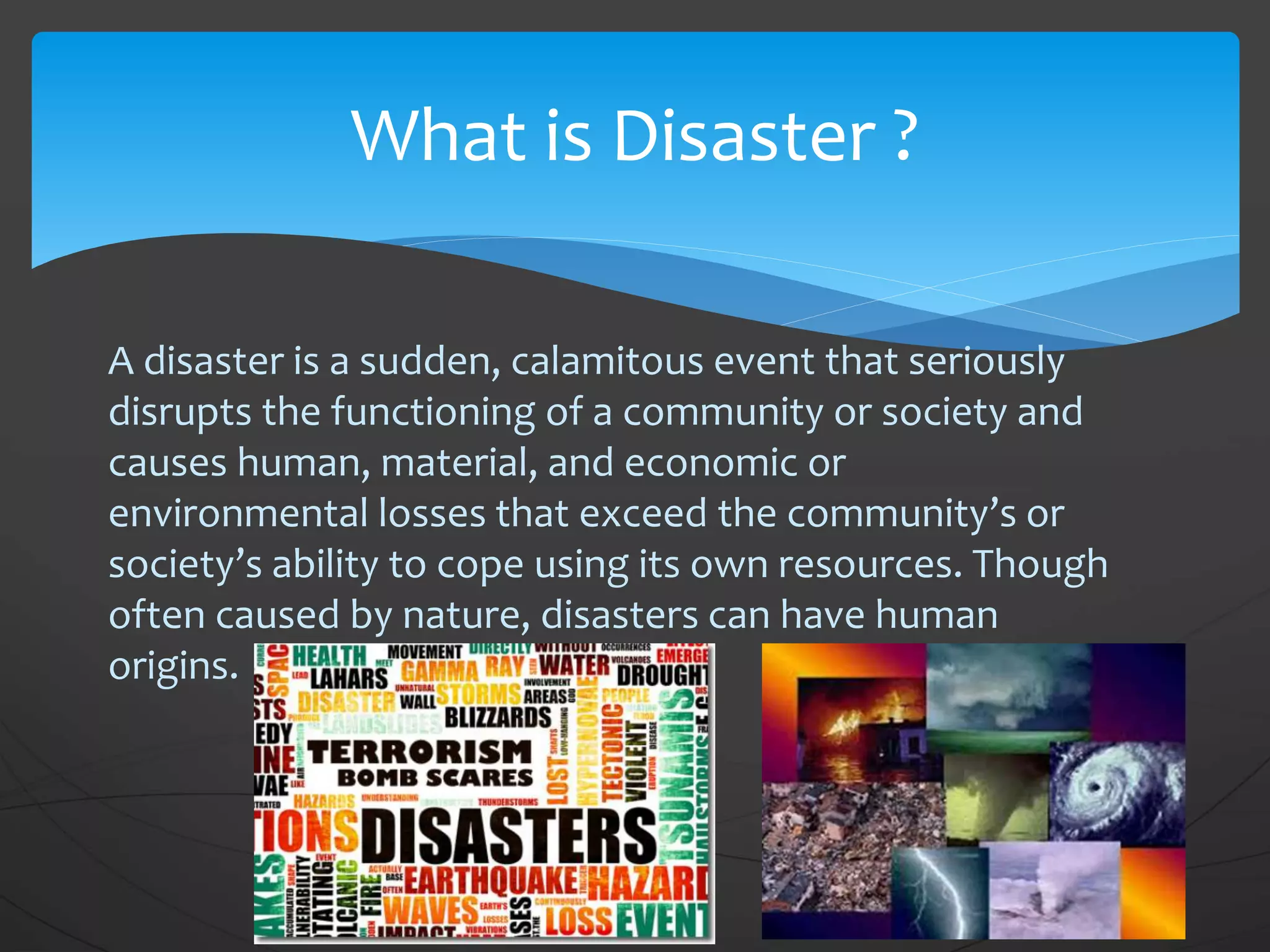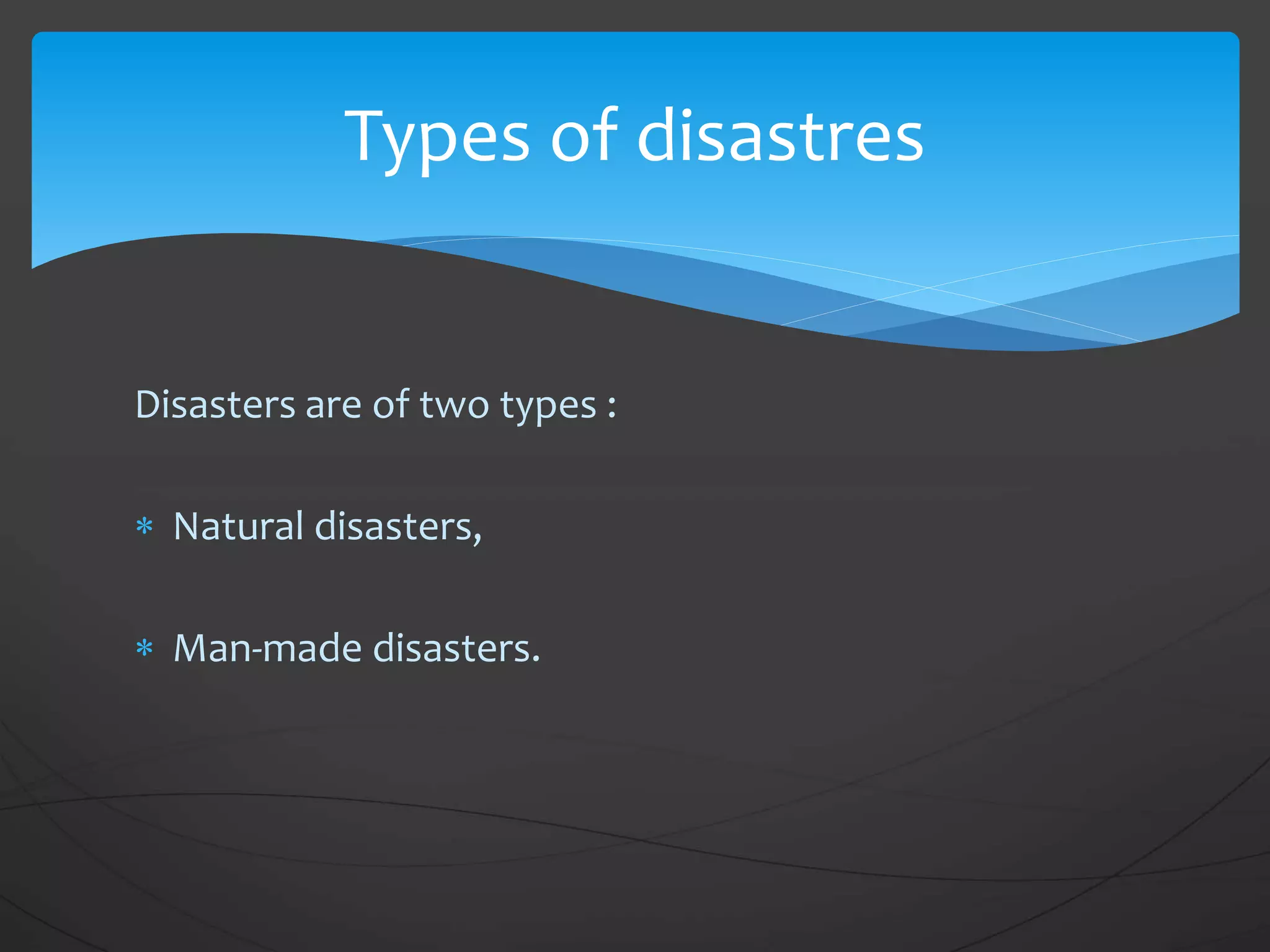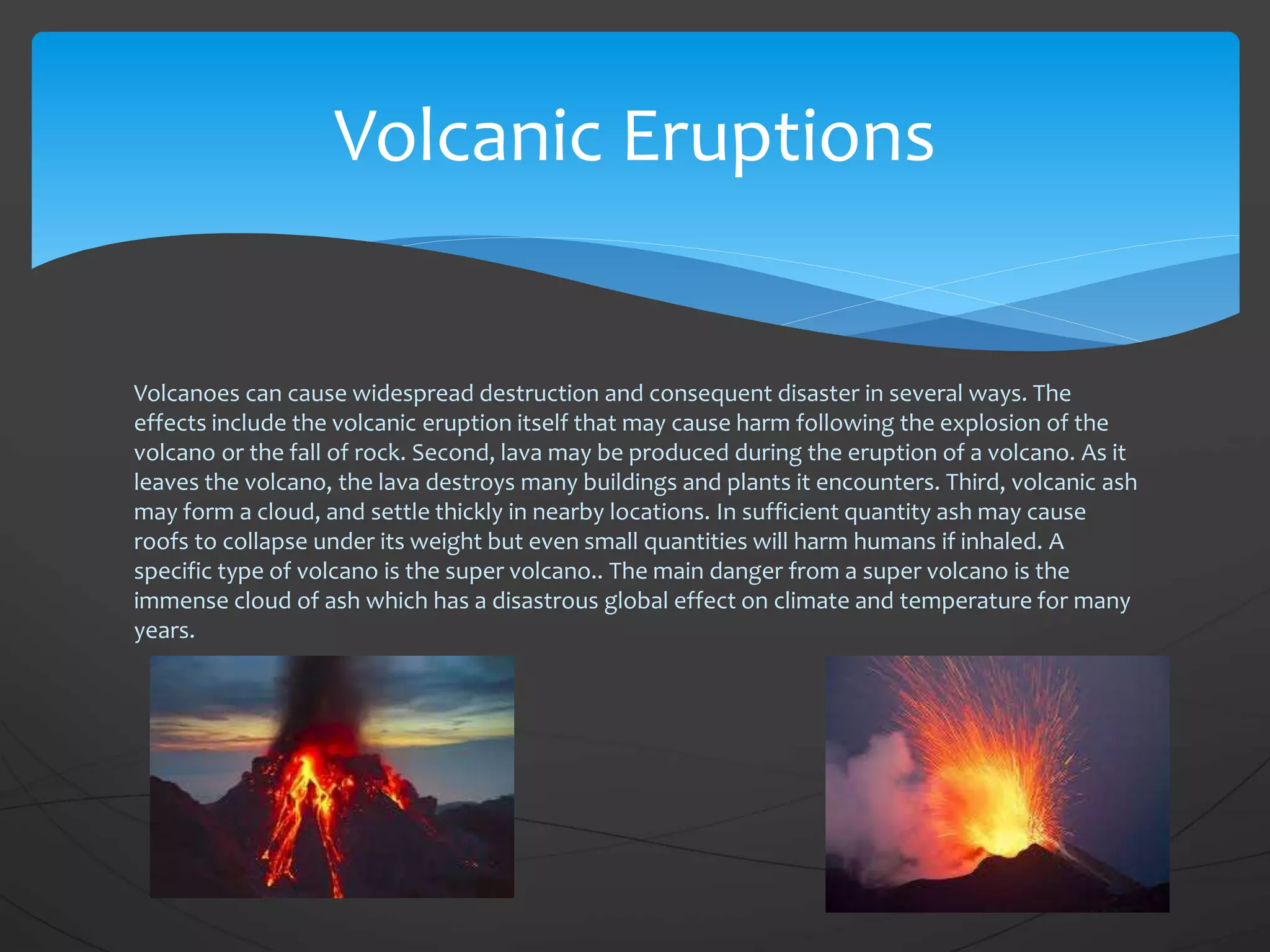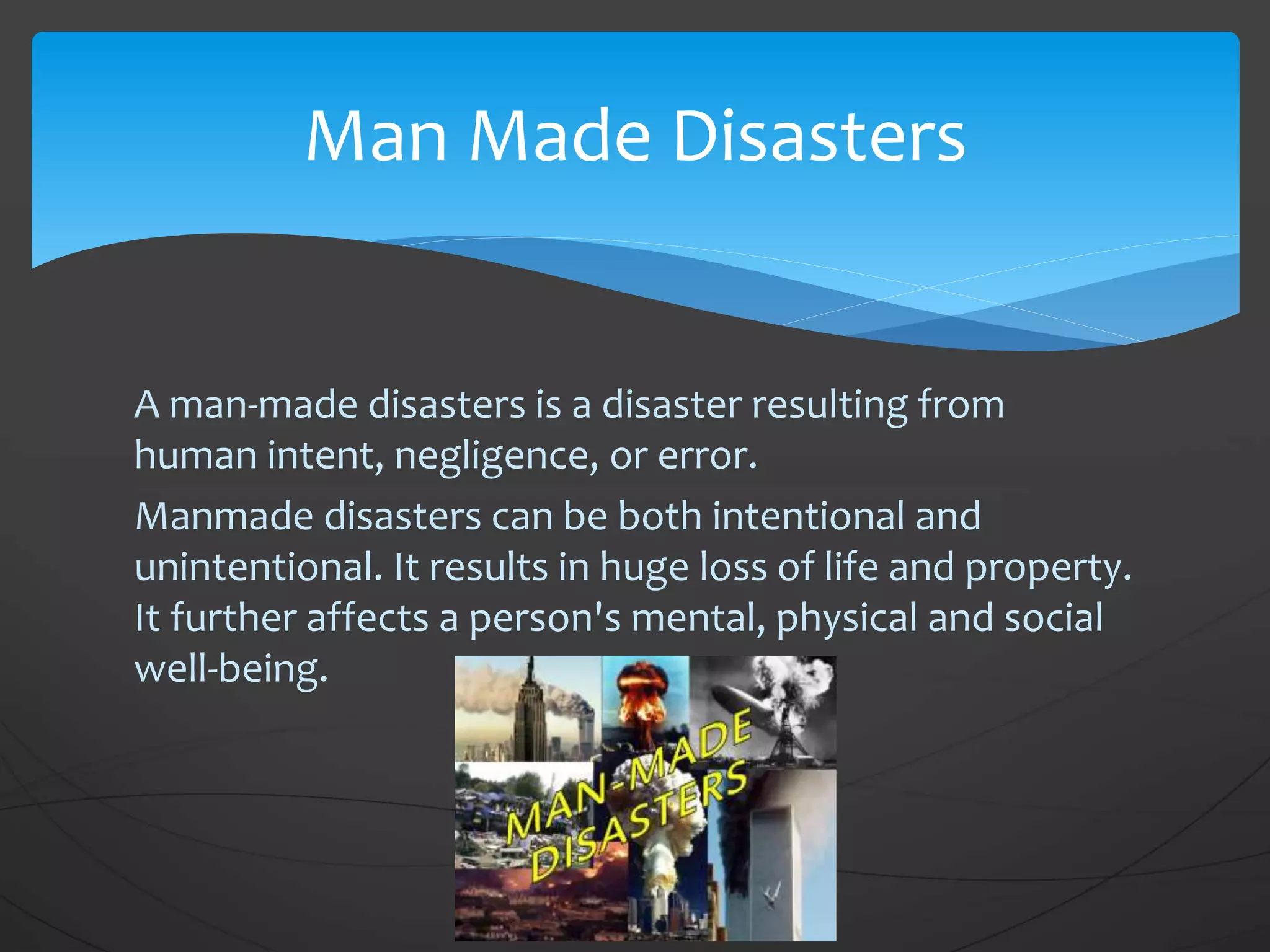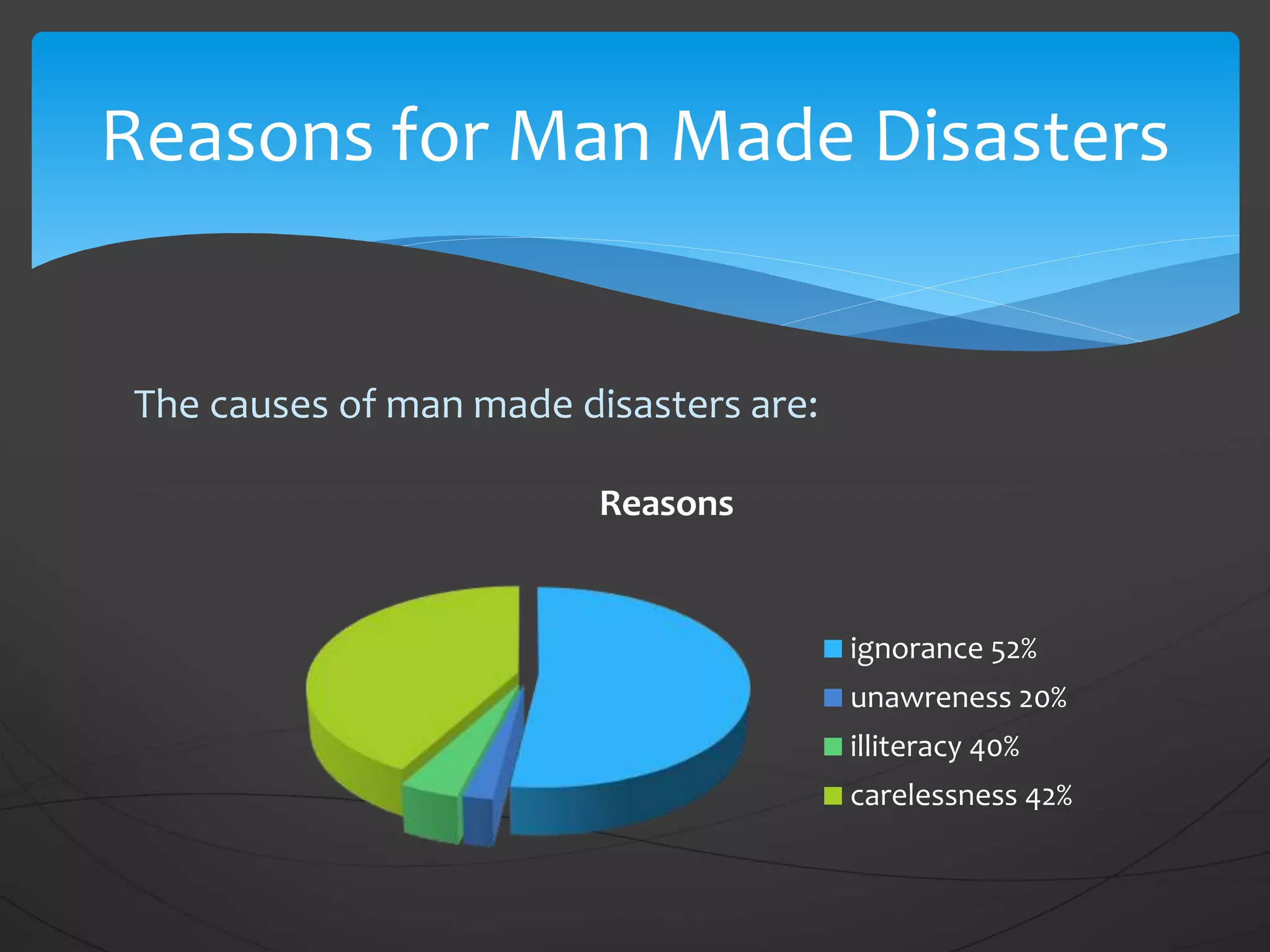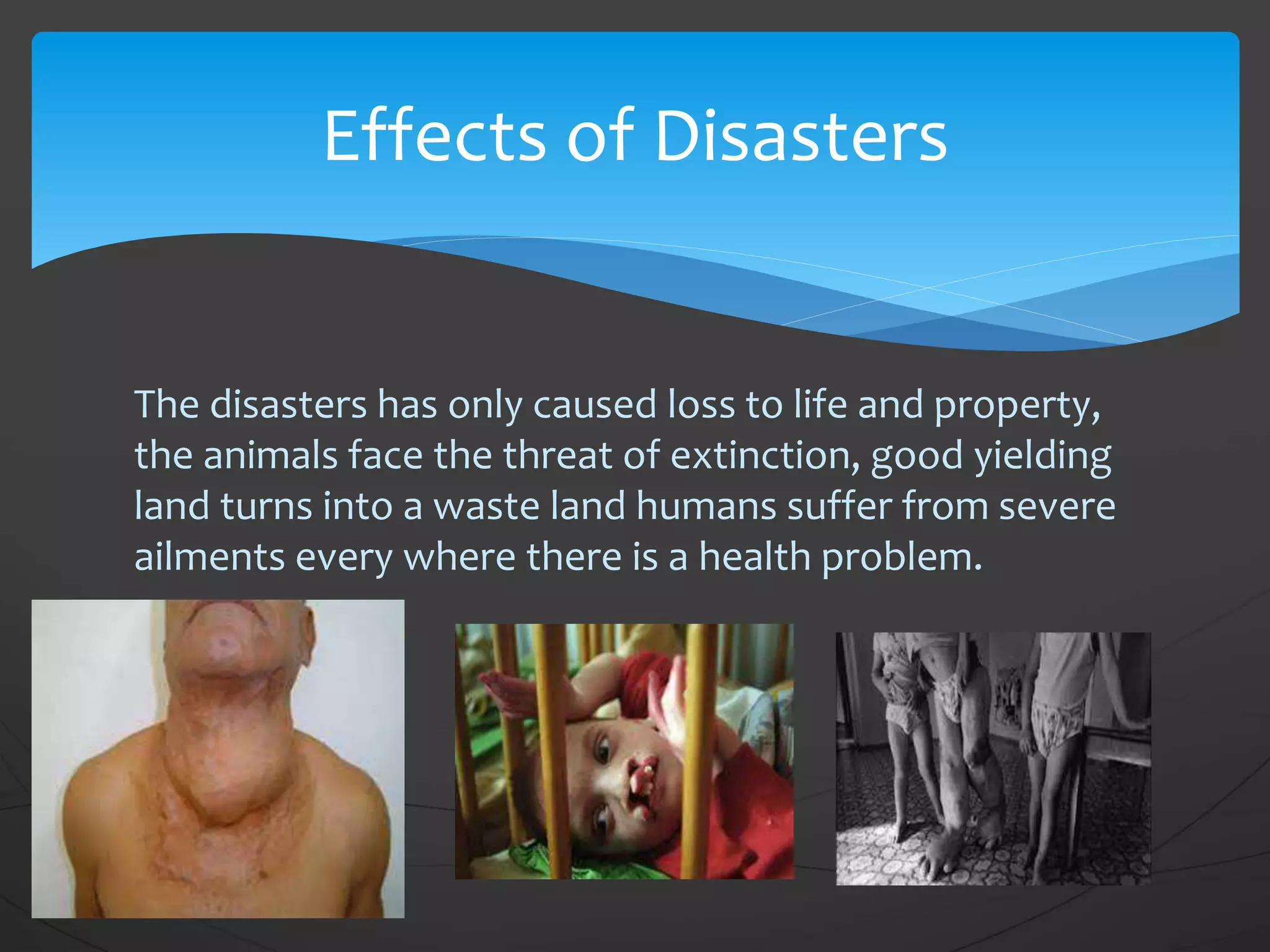A disaster is defined as a sudden event that causes widespread human and material losses exceeding a community's ability to cope. Disasters can be natural, caused by earthquakes, volcanic eruptions, cyclones, floods, droughts or tornadoes. They can also be man-made, such as chemical spills, nuclear accidents, acts of terrorism, or other industrial and transportation incidents. Preparing for disasters includes having detection systems, incident response plans, safety measures, hazard assessments, support systems, medical triage and evacuation routes. Both natural and man-made disasters can have severe negative effects including loss of life, property damage, health issues and environmental degradation.

